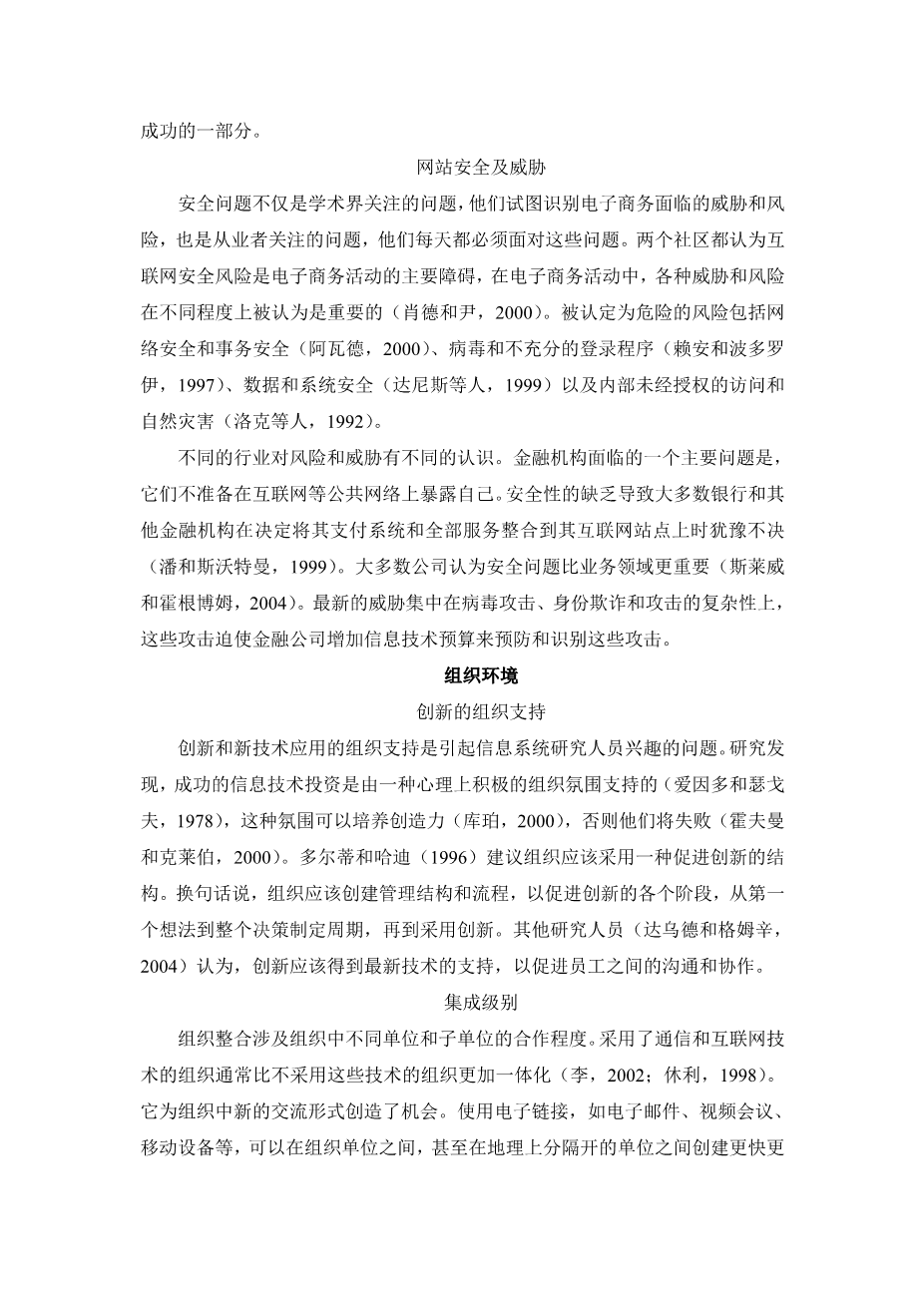Critical Success Factors of Web-Based E-Service: The Case of E-Insurance
Technological Environment
Infrastructure Flexibility
Infrastructure flexibility represents the “degree to which the resources are shareable and reusable” (Duncan, 1995, p.42). Another perspective of IT flexibility given by Clemons and Row (1991) highlights the ability of IS department to respond quickly and effectively to changes in systems demands and business practices. Latest research on this issue is focused on considering IT infrastructure flexibility not as a technical factor, but as a competitive advantage source that will allow organizations to succeed in the very fast changing environment (Chung et al., 2003; Duncan, 1995). Byrd and Turner (2000) investigated the IT infrastructure closely and suggested how different components of infrastructure should be flexible and adjustable to changes.
IT Staff Skills and Knowledge
Byrd and Turner (2000) refer to human infrastructure as knowledge and capabilities required to manage IT resources effectively within the organization. Rapid external changes require that the IT department be capable of using and adjusting IT resources efficiently to support the organization in its strategic decisions.
An e-commerce project is not only part of business strategy to reach new markets and customers, but it also represents a technical activity. Successful e-commerce projects combine technical and business aspects and should be supported in both areas (Niederman amp; Hu, 2003). Latest research on IT staff skills requirements reflects the changes in business strategies. Many studies have highlighted the importance of having skillful IT staff (Byrd amp; Davidson, 2003; Jennex et al., 2004), whose knowledge should not only be in the technical area, but also in business (Chung et al., 2003; Guzman amp; Kaarst-Brown, 2004) and communication abilities (Murnan, 2003).
Website Availability
Website availability consistently has been an issue in the practitioner community and is almost totally absent in academic research. Website availability makes it possible for the company to respond to customer requests at any time, or 24*7. The site availability has a significant influence on the Web-based revenues, company image, customer satisfaction, and loyalty (Kaneshige, 2000). Today, Website unavailability is usually the result of technical failures (Xie amp; Sun, 2002) such as malfunctions of service provider equipment, servers, user facilities, and the like. These malfunctions bring forward the dilemma on how much companies should invest to maintain high availability of their sites. This dilemma is influenced by the industry in which the company competes. The financial industry, in general, perceives high availability as crucial to maintaining a close relationship with its customers (Young, 1998). For instance, Charles Schwab has dramatically changed its attitude toward the level of availability of its Website. Implementing a high-availability Website strategy is part of its online activity success.
Website Security and Threats
Security issues are of concern not only to the academic community, which seeks to identify threats and risks to e-commerce, but also to the practitioner community, which must confront those issues every day. Both communities perceive Internet security risks as the main impediment to e-commerce activity, where various threats and risks are perceived at different levels of importance (Schoder amp; Yin, 2000). Some of the risks identified as dangerous are network security and transaction security (Awad, 2000), viruses and inadequate logon procedures (Ryan amp; Bordoloi, 1997), data and systems security (Danis et al., 1999), and internal unauthorized access and natural disasters (Loch et al., 1992).
Different industries have different perceptions of both risks and threats. A primary issue for financial institutions is that they are not prepared to expose themselves on a public network such as the Internet. Lack of security causes most banks and other financial institutions to hesitate on the decision to integrate their payment systems and the full range of their services in their Internet sites (Poon amp; Swatman, 1999). Most firms consider the security issue as much more important than the business area (Slewe amp; Hoogenboom, 2004). The latest threats are focused on virus attacks, identity fraud, and sophistication of the attacks, which force financial companies to increase their IT budget on preventing and identifying these attacks.
Organizational Environment
Organizational Support for Innovation
Organizational support for innovation and new technology applications are issues that have intrigued IS researchers. Studies have found that successful IT investments are supported by a psychologically positive organizational climate (Ein-Dor amp; Segev, 1978) that fosters creativity (Cooper, 2000), or otherwise they will fail (Hoffman amp; Klepper, 2000). Dougherty and Hardy (1996) suggest that organizations should adopt a structure to facilitate innovation. In other words, organizations should create administrative structure and processes to foster innovation in all stages, from the first idea through the whole cycle of decision making to adoption of the innovation. Other researchers (Daud amp; Kamsin, 2004) suggest that innovation should be supported by the latest technology available to facilitate the communication and collaboration among the employees.
Integration Level
Organizational integration relates to the extent of cooperation of different units and subunits of an organization. Organizations that have adopted communication and Internet technologies are usually more integrated than non-adopters (Lee, 2002; Sciulli, 1998). IT creates the opportunity for new communication forms in organizations. Using electronic
剩余内容已隐藏,支付完成后下载完整资料


英语译文共 4 页,剩余内容已隐藏,支付完成后下载完整资料
资料编号:[411680],资料为PDF文档或Word文档,PDF文档可免费转换为Word
您可能感兴趣的文章
- 晚年丧偶和已婚妇女的休闲活动和抑郁症状外文翻译资料
- 认知行为与心理动力人际治疗对进食障碍的影响:一项关于缓解期患者特征和改变在进食障碍特异性和一般精神病理学中的作用的荟萃分析外文翻译资料
- 社区和疗养院里老年人的精神需要外文翻译资料
- 日本社区协会的参与和正式志愿者外文翻译资料
- 社会工作组织中的变革型领导与社会工作者更替的关系外文翻译资料
- 社区参与现实世界:新形势下的机遇与陷阱治理空间外文翻译资料
- 提升在社区独立生活的长者的生活满意度:看护者对志愿者的看法外文翻译资料
- 非典型就业群体失业保障制度的研究外文翻译资料
- 日本长期护理保险和综合护理外文翻译资料
- 新农合与城镇居民医疗保险并轨研究外文翻译资料


